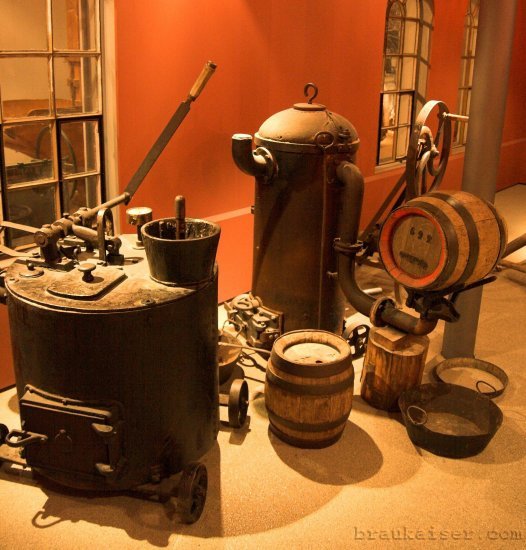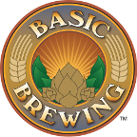Difference between revisions of "German Brewing between 1850 and 1900 : Malting and Wort Production"
| Line 3: | Line 3: | ||
This article tries to shed some light on the German brewing practice that as it was practiced in the later half of the 19th century. It is largely based on the description of the brewing process as it is found in various books of that time. In particular the Brockhaus Konversations Lexikon (conversation encyclopedia) of 1898 and the book "Chemie fuer Laien" (layman chemistry). Althogh neither of them are brewing textbooks as they were targeted at the curious and affluent part of the public their description of the brewing process is surprisingly detailed and can only be covered in excerpts here. The actual details of the brewing practice of a particular brewery was a well guarded secret that was passed on from generation to generation and rarely published in textbooks. Brewers back than had only a limited knowledge of the science behind brewing and once they found a way that worked they made sure that a competing brewery would not benefit from that knowledge. Most of the pictures were taken in the Bavarian Brewing Museum in Kulmbach (Germany). | This article tries to shed some light on the German brewing practice that as it was practiced in the later half of the 19th century. It is largely based on the description of the brewing process as it is found in various books of that time. In particular the Brockhaus Konversations Lexikon (conversation encyclopedia) of 1898 and the book "Chemie fuer Laien" (layman chemistry). Althogh neither of them are brewing textbooks as they were targeted at the curious and affluent part of the public their description of the brewing process is surprisingly detailed and can only be covered in excerpts here. The actual details of the brewing practice of a particular brewery was a well guarded secret that was passed on from generation to generation and rarely published in textbooks. Brewers back than had only a limited knowledge of the science behind brewing and once they found a way that worked they made sure that a competing brewery would not benefit from that knowledge. Most of the pictures were taken in the Bavarian Brewing Museum in Kulmbach (Germany). | ||
| − | The following outline of the brewing process is largely taken from the book [http://books.google.de/books?id=AR0JAAAAIAAJ "Chemie fuer Laien" (layman chemistry)] which was published in 1860. Occasionally I'll add comments which will be set in ''italic''. While this book was published in the Prussian part of Germany it does make references to the Bavarian style of brewing: | + | The following outline of the brewing process is largely taken from the book [http://books.google.de/books?id=AR0JAAAAIAAJ "Chemie fuer Laien" (layman chemistry)] which was published in 1860. Occasionally I'll add comments which will be set in ''italic''. Native German brewing vocabulary will also be set in italic and a fitting translation may be provided in parenthesis. While this book was published in the Prussian part of Germany it does make references to the Bavarian style of brewing: |
| − | The brewing process consists of 3 main parts: malting, wort production and fermentation. Only 3 | + | The brewing process consists of 3 main parts: malting, wort production and fermentation. Only 3 ingredients are used in brewing: water, malt and hops. ''Luis Pasteur discovered yeast in the late 1860s, which means that this book was written without the knowledge of yeast.'' At this time many brew masters even strongly believed that only barley can be used in brewing and "that every one who says something else is a fool and who actually believes it is an even bigger fool". But in fact wheat and occasionally oat and rye were malted and could be used as well. |
| − | Malting is nothing more than the germination of the grain and its interruption at the right time. Finding "the right time" is the sign of a skilled brew master. And now that we have the thermometer it has become child's play compared to past times where the bare hand was used to measure the temperature ''At this time malting was not as separated from brewing as it is today and most breweries would include malting facilities in which the malt for the beer was produced.'' | + | Malting is nothing more than the germination of the grain and its interruption at the right time. Finding "the right time" is the sign of a skilled brew master. And now that we have the thermometer it has become child's play compared to past times where the bare hand was used to measure the temperature ''At this time malting was not as separated from brewing as it is today and most breweries would include malting facilities in which the malt for the beer was produced.'' |
| + | |||
| + | Malting itself consists of three steps: steeping, germination and kilning. For the first step a wooden or stony vessel of a size that matches the needs of the brewery is used. This is the ''Quellbottich'' or ''Malzstein'' (steeping tun or malt stone). It's better to make it of stone that of wood as stone vessels are nearly indestructible and don't give off any flavors to the malt. The ''Malzstein'' is filled to its half with clean and soft river water and the grain is added. It's important that this malt comes from a single source. Otherwise they may behave quite differently in the ''Quellbottich''. ''Back then they already realized that the growing conditions of the malt have a significant effect on the speed in which it germinated. If a mix was used some of the malt may become overmodified while the other part is undermodified.'' | ||
Revision as of 03:41, 7 February 2009
This article tries to shed some light on the German brewing practice that as it was practiced in the later half of the 19th century. It is largely based on the description of the brewing process as it is found in various books of that time. In particular the Brockhaus Konversations Lexikon (conversation encyclopedia) of 1898 and the book "Chemie fuer Laien" (layman chemistry). Althogh neither of them are brewing textbooks as they were targeted at the curious and affluent part of the public their description of the brewing process is surprisingly detailed and can only be covered in excerpts here. The actual details of the brewing practice of a particular brewery was a well guarded secret that was passed on from generation to generation and rarely published in textbooks. Brewers back than had only a limited knowledge of the science behind brewing and once they found a way that worked they made sure that a competing brewery would not benefit from that knowledge. Most of the pictures were taken in the Bavarian Brewing Museum in Kulmbach (Germany).
The following outline of the brewing process is largely taken from the book "Chemie fuer Laien" (layman chemistry) which was published in 1860. Occasionally I'll add comments which will be set in italic. Native German brewing vocabulary will also be set in italic and a fitting translation may be provided in parenthesis. While this book was published in the Prussian part of Germany it does make references to the Bavarian style of brewing:
The brewing process consists of 3 main parts: malting, wort production and fermentation. Only 3 ingredients are used in brewing: water, malt and hops. Luis Pasteur discovered yeast in the late 1860s, which means that this book was written without the knowledge of yeast. At this time many brew masters even strongly believed that only barley can be used in brewing and "that every one who says something else is a fool and who actually believes it is an even bigger fool". But in fact wheat and occasionally oat and rye were malted and could be used as well.
Malting is nothing more than the germination of the grain and its interruption at the right time. Finding "the right time" is the sign of a skilled brew master. And now that we have the thermometer it has become child's play compared to past times where the bare hand was used to measure the temperature At this time malting was not as separated from brewing as it is today and most breweries would include malting facilities in which the malt for the beer was produced.
Malting itself consists of three steps: steeping, germination and kilning. For the first step a wooden or stony vessel of a size that matches the needs of the brewery is used. This is the Quellbottich or Malzstein (steeping tun or malt stone). It's better to make it of stone that of wood as stone vessels are nearly indestructible and don't give off any flavors to the malt. The Malzstein is filled to its half with clean and soft river water and the grain is added. It's important that this malt comes from a single source. Otherwise they may behave quite differently in the Quellbottich. Back then they already realized that the growing conditions of the malt have a significant effect on the speed in which it germinated. If a mix was used some of the malt may become overmodified while the other part is undermodified.



